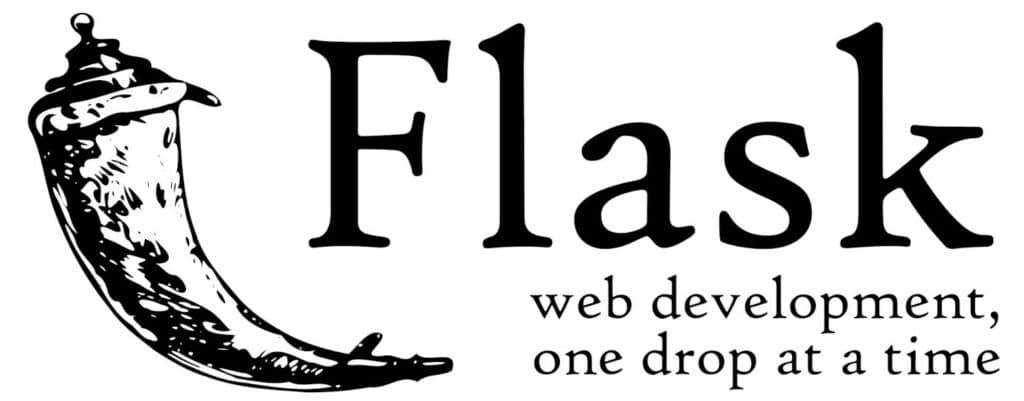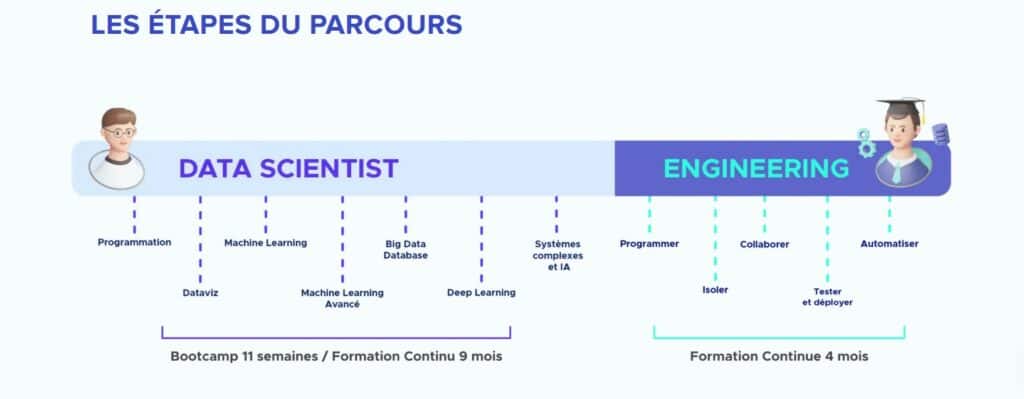A framework is a collection of modules and packages used to develop software and help developers avoid having to deal with low-level details.
The three most widely used frameworks for developing web applications in Python are Django, Flask and FastAPI. Each has its own advantages and disadvantages, depending on the use case. The three main Python frameworks are Django, Flash and FastAPI.
What is FastAPI?
FastAPI is a high-performance, open source web framework for creating APIs with Python from version 3.6. Launched in 2018, it was created by Sebastián Ramírez, who wasn’t satisfied with existing frameworks such as Flask and DRF.
That’s why he created his own framework using tools like Starlette and Pydantic. Today, many world-renowned companies such as Uber, Netflix and Microsoft use FastAPI to build their applications.
Its first strength is a high level of performance, comparable with NodeJS and Go thanks to Starlette and pydantic. The framework is also very quick to code, speeding up development.
The number of bugs and opportunities for human error is greatly reduced.
What’s more, FastAPI is very intuitive to use, with completion and debugging features.
Designed to be simple to learn and use, this tool reduces the time spent reading documentation. Code duplication is also minimized.
In addition, FastAPI delivers production-ready code with automatic interactive documentation. Finally, it is based on the open standards OpenAI and JSON Schema.
This framework is designed to optimize the developer’s experience, so that they can write simple code to build production-ready APIs using best practices.
What is FastAPI?
One of the main use cases for FastAPI is the creation of API endpoints. This task can be accomplished very easily using the OpenAPI standard, and in particular the Swagger UI interactive user interface.

However, FastAPI is not limited to APIs. It can be used for any web framework use case, such as the delivery of legacy web pages with the Jinja2 templating engine, or for WebSockets-based applications.
FastAPI is mainly used for data science and e-commerce applications. It enables developers to use the REST API and a wide range of functions to implement them in applications.
FastAPI vs Flask vs Django
The three main Python frameworks are Django, Flask and FastAPI. Each has its own advantages and disadvantages, depending on the use case. Find out more about their respective advantages and disadvantages.
Fast API is a high-performance, open-source Python web framework used to develop web APIs with the hint types of Python 3.6 or higher. It enables data types to be validated even within JSON requests.
It is based on standards such as JSON Schema, OAuth 2.0 and OpenAPI. It also facilitates the creation of GraphQL APIs with a Python library called graphene-python.
On the other hand, its weak point is that this framework is relatively new. The community is therefore rather small compared with other frameworks, and there is little educational material apart from the official documentation.
FastAPI is used in particular for use cases where speed is a priority. For example, Netflix uses it for internal crisis management.
This framework is also perfectly suited to the deployment of Machine Learning models, since models work best in production when accompanied by a REST API and deployed as microservices.
FastAPI vs Flask
Flask is a Python microframework. A web microframework is a development framework with a simple configuration that can be used to develop minimalist web applications.
This tool offers various options such as template engines like ORM, and caching and authentication functionalities.
Designed for creating web applications with Python, it is considered simple, fast and extensible.
It was originally created to develop web applications using the Python programming language.
It’s designed to be easy, fast and scalable for microservices and complex applications, i.e. lightweight applications with a reduced list of functionalities.
Its first strength is its flexibility and convenience, since most aspects of Flask can be manipulated. This is a feature found in very few frameworks.

It’s also an ideal framework for beginners, thanks to its simplicity. Developers can learn how to use it and understand it better over time, so they can build applications quickly and effortlessly. Finally, an integrated development server enables unit testing.
On the other hand, the absence of a data validation system can cause programs to crash. Another weak point is that queries are handled in turn by a single source, which can be very time-consuming. Flask uses third-party modules, with the attendant risk of security breaches.
The main use cases for Flask are commercial projects. It is used for e-commerce systems, social networking robots, social networks and static websites. It is very useful at the beginning, but may lack performance for larger loads.
FastAPI vs Django
Django is an open-source Python-based web development framework. It was created in 2003 by Adrian Holovaty and Simon Willison, and uses the Model-Template-View pattern.
The framework owes its popularity to its robust, straightforward nature. It’s one of the most widely used frameworks in the world, notably by technology giants such as Instagram and YouTube. It also encourages reusable code.
Django’s code structure is highly efficient, enabling developers to easily add functionality to their websites. Security is also a priority, with features to defend against SQL injection and cross-site false query attacks.
In addition, the Rest (representation state transfer) framework can be defined as a software architectural style to define a set of constraints to be used when creating web services on Django.
This is the Django Rest Framework (DRF): a flexible set of tools used to design Web APIs on Django, taking advantage of its modularity and customizable architecture.
Nevertheless, Django’s software is slow and can limit development speed due to its many reusable modules. It is also necessary to ensure that previous versions are always compatible with new updates. Again, this adds to the slowness of the framework. In addition, Django uses ORM, which was created before SQLAlchemy and is therefore less flexible.
Django can be used for projects of any size and capacity. It can be used for both simple and high-performance sites.
Key use cases include booking engines, shopping platforms, school management systems, CRM systems for internal data, or web applications for iOS and Android.
How do I learn to use Python and web development frameworks?
The Python programming language is one of the most widely used in the world. To learn how to use it, you can choose DataScientest training courses.
All our programs start with a module dedicated to the fundamentals of the Python language and its Data Science libraries. By the end of the course, you’ll have all the skills you need to work in one of the Data Science professions.
Our courses can be completed in Continuing Education or intensive BootCamp mode. Our Blended Learning approach combines individual coaching on an online platform and Masterclasses. All courses are delivered remotely. For financing, all our programs are eligible for state financing.
After your Data Scientist training, or if you are already a professional Data Scientist, you can take one of our expert courses to acquire additional skills. The Machine Learning Engineer course enables you to learn Machine Learning models in production, and the Advanced Engineering course to acquire expertise in the Python language and task automation.

Both courses are part of a 4-month continuing education program. They cover the Python language in the Programmer module, Flask in the Collaborator module, and Unit Testing in the Test and Deploy module. Don’t wait any longer, and discover the DataScientest training courses!
You’ll know everything there is to know about FastAPI and the various web development frameworks. For more information, take a look at our complete dossier on the Python language and our dossier on Machine Learning.










